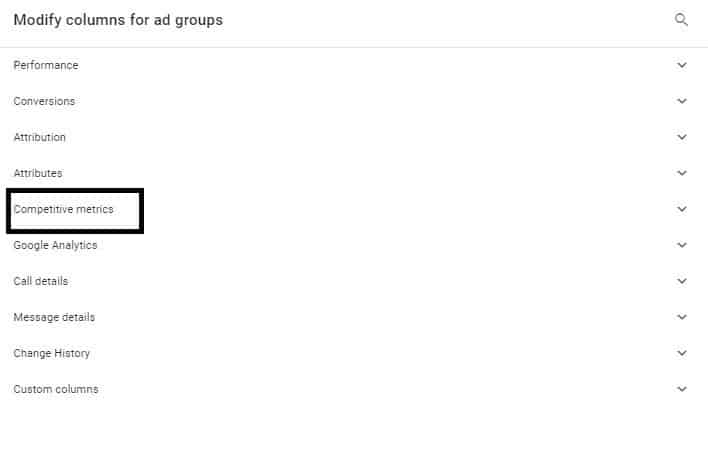Last Updated on February 28, 2019 by admin
This past week, Google announced within its Google Ads support section that it is going to be taking away the average position metric in reporting. This is arguably one of the largest developments in Google Ads in quite some time. So, what does it mean for the average small business paid search advertiser?
First, the average position metric in Google Ads was one of the more misunderstood metrics within reporting. Many interpreted it being the true actual top listing in a SERP. While it took on a few definitions within the evolution of Google Ads, in its most recent form, it was the position in how advertisers were being shown in relation to other advertising positions, not the actual position on the search page. This concept is very well explained recently by Fred Vallaeys over on Search Engine Land.
Moving forward, Google is directing users to some recently added reporting metrics to evaluate average search impression and bidding. They are Absolute Top Impression Share, which is the percentage that your ads show at the very top of SERPs, as well as Top Impressions Share. This is a percentage of when your ads display above organic listings in the SERP.
I know that many of you out there asking “I barely understand what these new metrics mean, plus, how to do I find them…?!”
To start getting these metrics to show in your interface reporting, go do Modify Columns in the right side of your screen:

Then select Competitive Metrics:

From there, you can select these new metrics to show at the campaign, ad group, or keyword level.

This is in addition to an already important yet overlooked metric, which is Search Impression Share. Search Impression Share is the percentage that your ads received impressions divided by the number of impressions you could have received. In other words, was your campaign generating impressions for ads for keywords and related keywords in your ad groups. This number can give insight as to any daily budget or ad quality issues you may be having. Like the percentages in for Absolute Top Search Impressions Share and Top Impression Share, you can use the percentages to assess your bid management and budget. Have an impressions share of 60%, it means you were coming up 60% of the time you have triggered impressions. But in theory, it also means that you missed on 40% of the possible impressions over a given time period.
Additionally, Google has rolled out a new metric to help evaluate the visibility and positioning of your ads – Click Share. This is defined as “the clicks you’ve received on the Search Network divided by the estimated maximum number of clicks that you could have received.” Google rolled out this feature in the last month. It is designed to provide a combined view of Impressions Share and Click Share.
Tactically, these will be become the new metrics to evaluate to see if your bidding and ad copy strategies are impacting average position. As always though, the premise of trying to rely on bidding to attract quality clicks remains a poor approach. Depending on your goal structure, maintain a focus on click-through rate as a part of our performance evaluation. If your absolute top and top impressions shares are high yet your click-through rates remain low, be sure to focus on your ad copy, ad extensions, keyword matching, and actual search query reports for customer intent. Despite the change in position metrics and reporting, this process remains constant.

Leave a Reply